Damaged Prop: Repair or Replace?
Sooner or later it happens to all of us, even the most careful of navigators – the prop gets dinged. Sometimes it’s a little more than a ding, yet all of the blades are still there, more or less. Your boat dealer, local mechanic, and the local boatyard will all tell you the same thing -- replace the prop! (They can’t fix it and want to sell you a new screw.) But you wonder: “Can’t a good prop shop salvage this with some creative metalworking and make it almost as good as new?” If you’ve faced that dilemma, you are not alone.
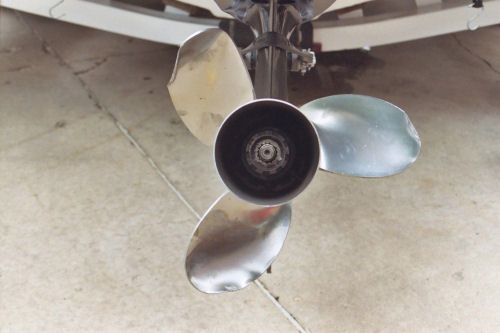
First of all, was your prop doing a good job before it was damaged? That means—
1. Was your prop keeping your motor in the proper rpm range? Failure to do this results in poor fuel economy, poor performance, and most expensive of all—potentially catastrophic damage to your motor.
2. Did your boat accelerate and corner well?
3. Did you experience noticeable vibration from the prop? Nothing good comes from vibration!
If there are issues with any of these items, it might be time to consult with a prop manufacturer or your propeller dealer and replace your prop. After all, a prop that is perfectly repaired, but is not properly suited for your application—is perfectly improper.
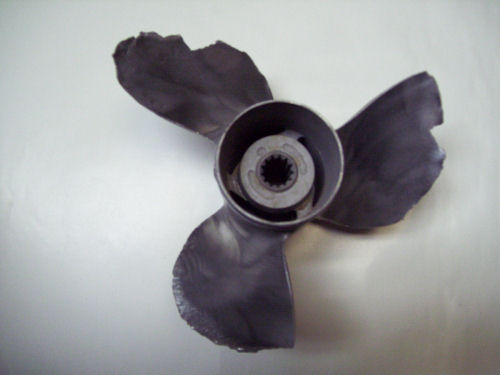
Aluminum Props
If the basic performance factors were okay, next you need to evaluate the feasibility of repairing the prop. If you have an aluminum prop, you should inspect for excessive metal loss (more than 10% of the blade area), extended cracks, blades that are too thin, or cavitation burns. If your prop has any of these issues, bite the bullet.
An additional consideration is whether your prop may need the inner hub that protects your drive train replaced. This can add another $40-60 to the repair cost, so it needs to be examined as well. Aluminum propellers are fairly inexpensive to purchase new, so you don’t want to put too much money into them, unless they are in good overall condition.
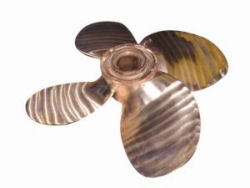
Bronze Wheels
What if you have a V-drive or inboard skiboat/cruiser with bronze wheels? The critical issue here is blade thickness. Even if you made a “pretzel” out of your prop, skilled prop shops can work wonders. But, if the blades are excessively thin, you may be sinking money into a lost cause. When you straighten, you need to regrind to smooth the surface and remove dents and nicks. Each time this is done, critical metal thickness is lost. Remember that a 20% reduction in thickness may reduce the strength by up to 50%.
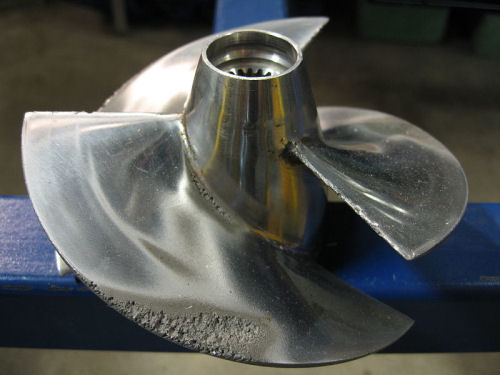
Stainless props need to be evaluated on similar criteria as bronze ones. First of all, is the remaining thickness okay? Any signs of cracks? How extensive is the damage? How much metal is missing?
Generally speaking, stainless props are made from two general types of metals. High -carbon stainless is very strong and damage resistant. It welds well and can generally be repaired unless it is bent excessively. Given its high strength, it does not like being bent into a pretzel and straightened.
High Strength or Low Strength?
Another characteristic of high-strength stainless is the fact that it shows more corrosion than low-strength stainless. This is a natural consequence of the higher carbon steel content used in the alloy. Low-strength stainless uses more nickel in the alloying combination. This provides a significant increase in corrosion resistance, but also drops the tensile strength, typically by 50% compared to the high-strength material.
The material used in low-strength stainless props is more similar to that used for deck hardware. Since the strength of the material is more like bronze than a high strength stainless, it will “pretzel” pretty easily. The good news is that it can normally be straightened out again.
In either case, the issue will be to examine for enough blade thickness to allow the repair to be completed and still have sufficient “meat” left for durability.
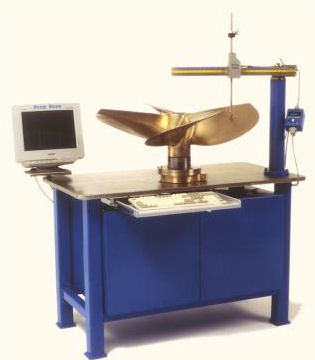
Repairing Props Is an Art
If the decision is to repair the prop, look for a well-recommended repair shop. The proper repair of propellers is an art. It takes a true skilled technician to do the job you want. There are many good repair facilities available. If you have a prop shop that is doing a great job for you, stay with them. However, if you are looking for a shop, you may want to consult the National Marine Propeller Association (http://www.nmpa.net), which provides training and workshops to help members keep their technical skills current. It may be a good resource to assist you in finding a skilled prop shop.